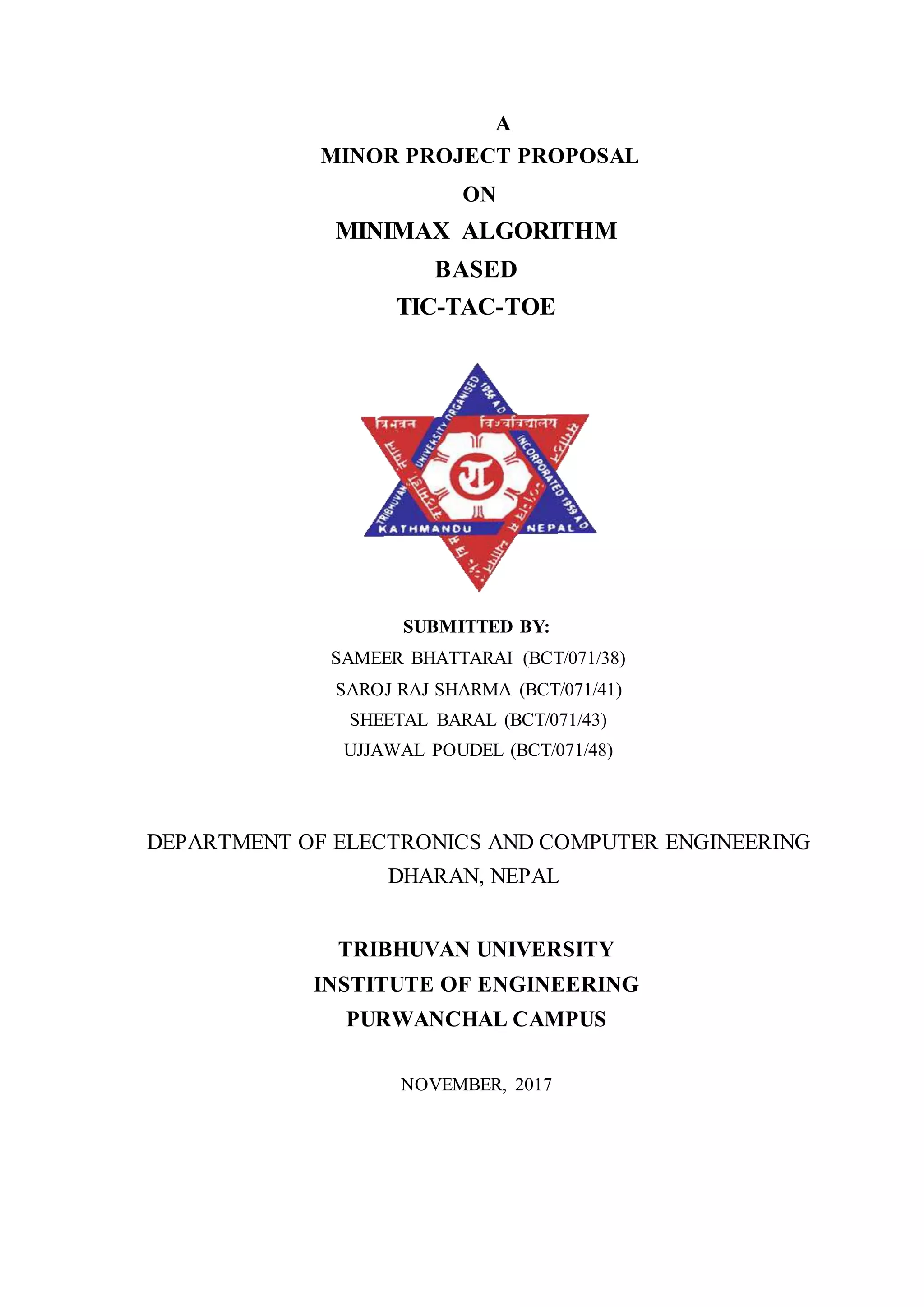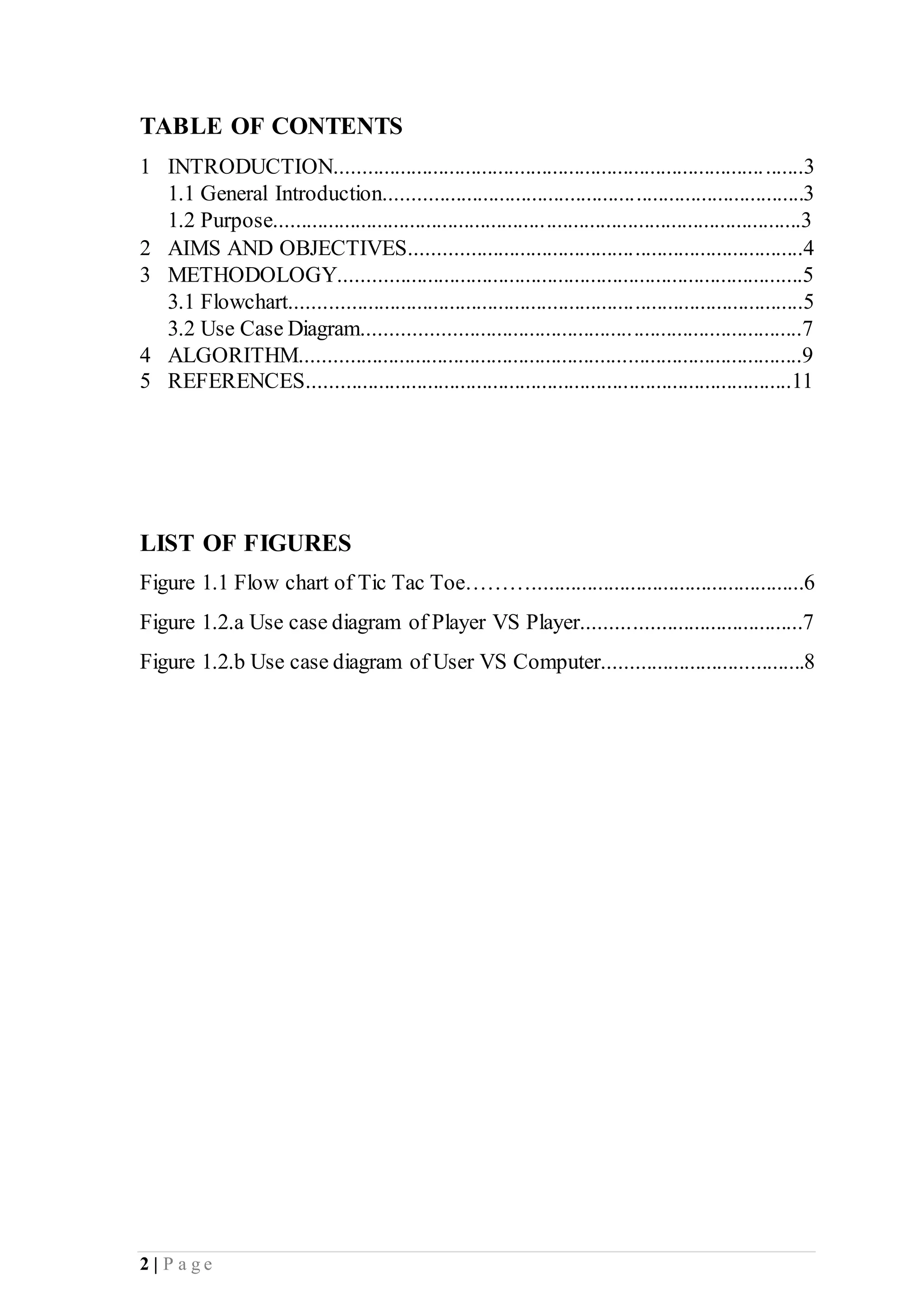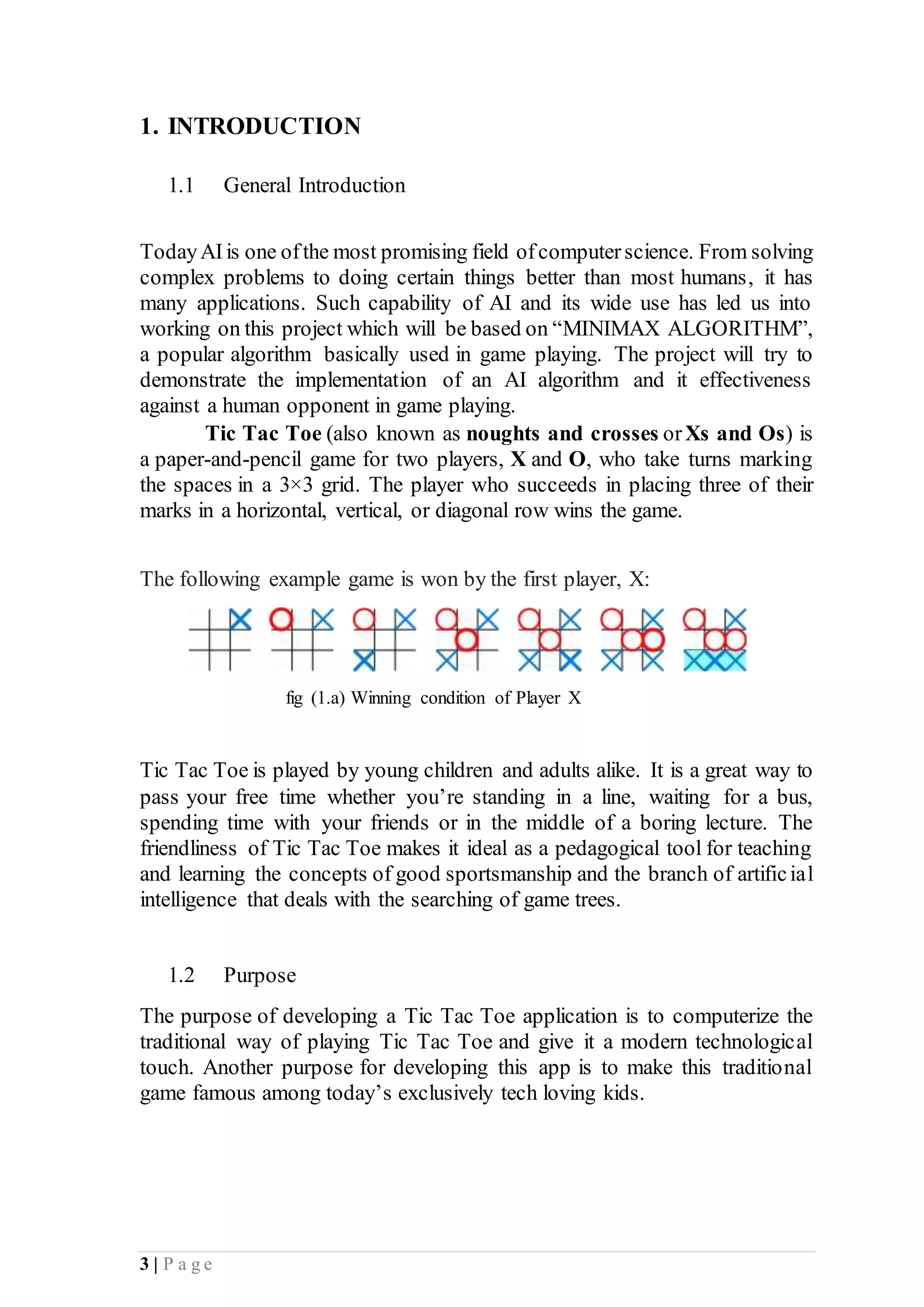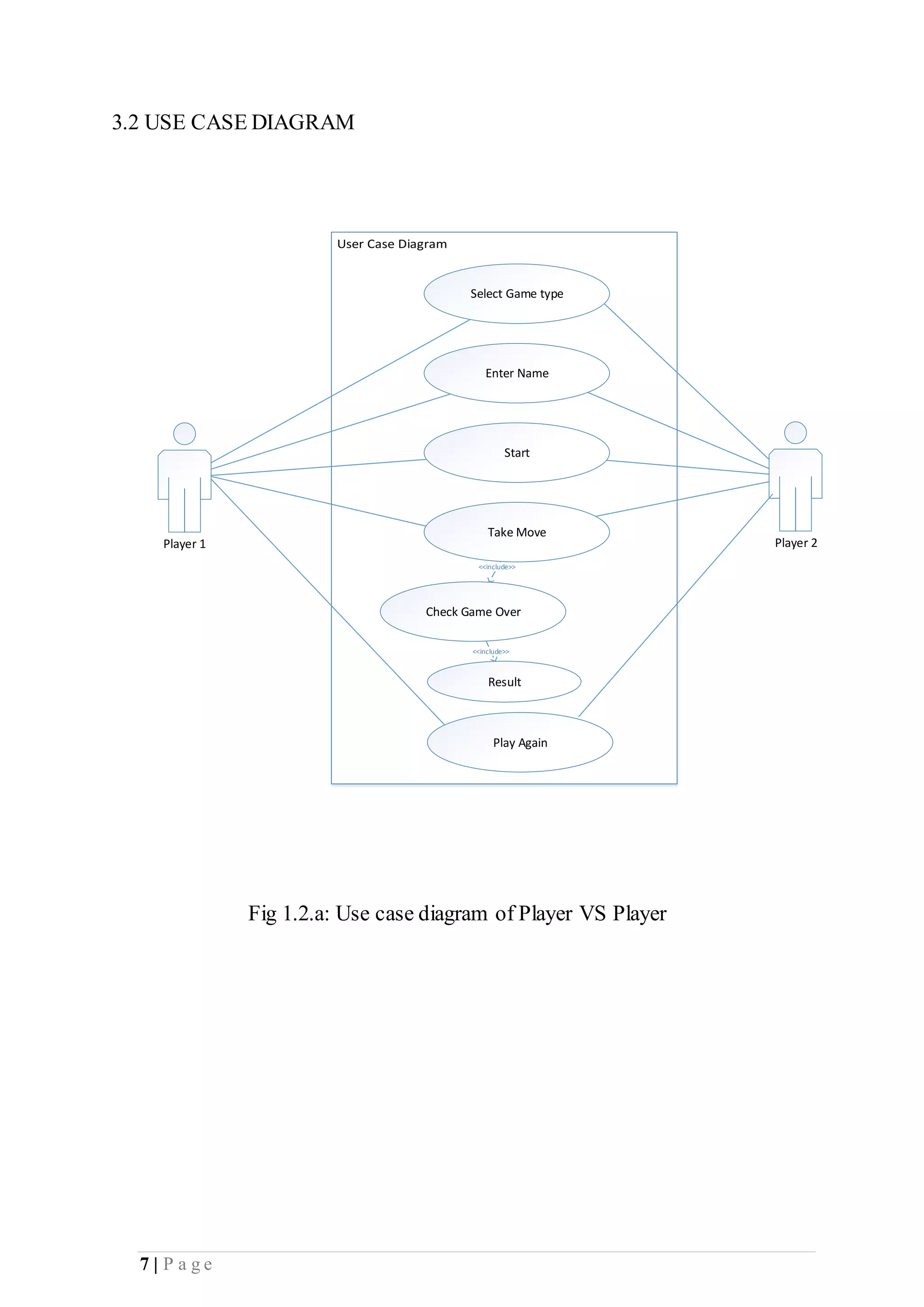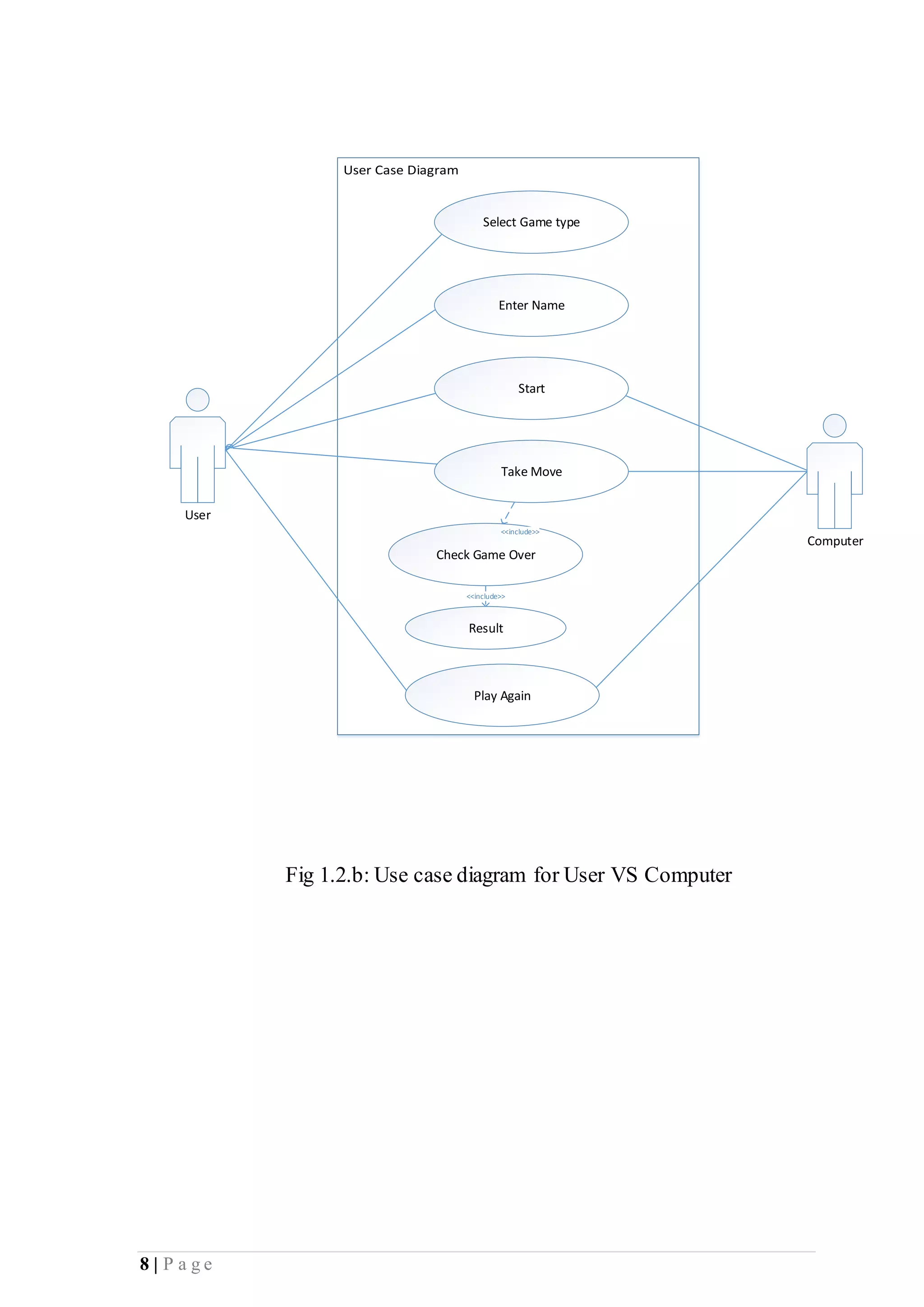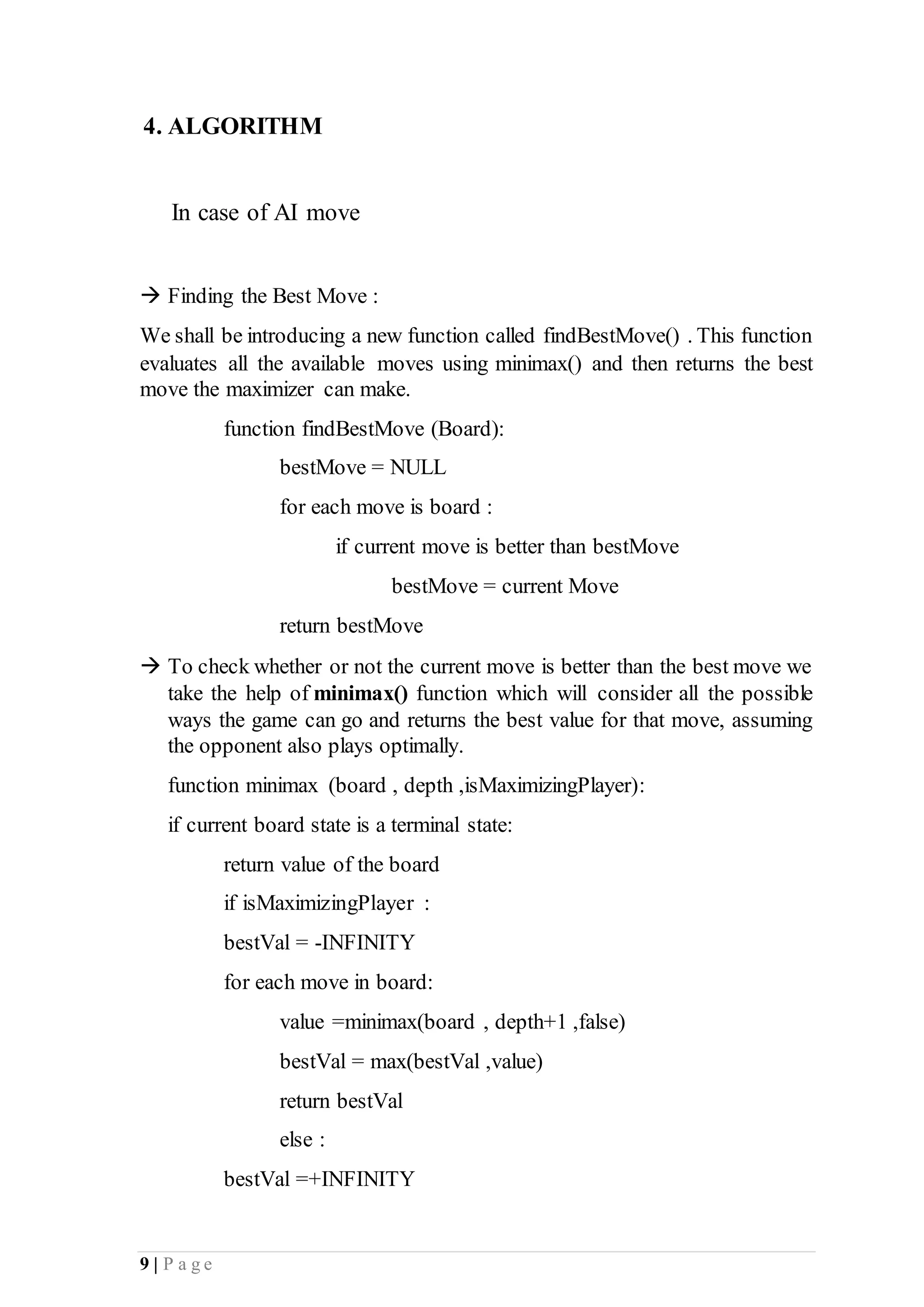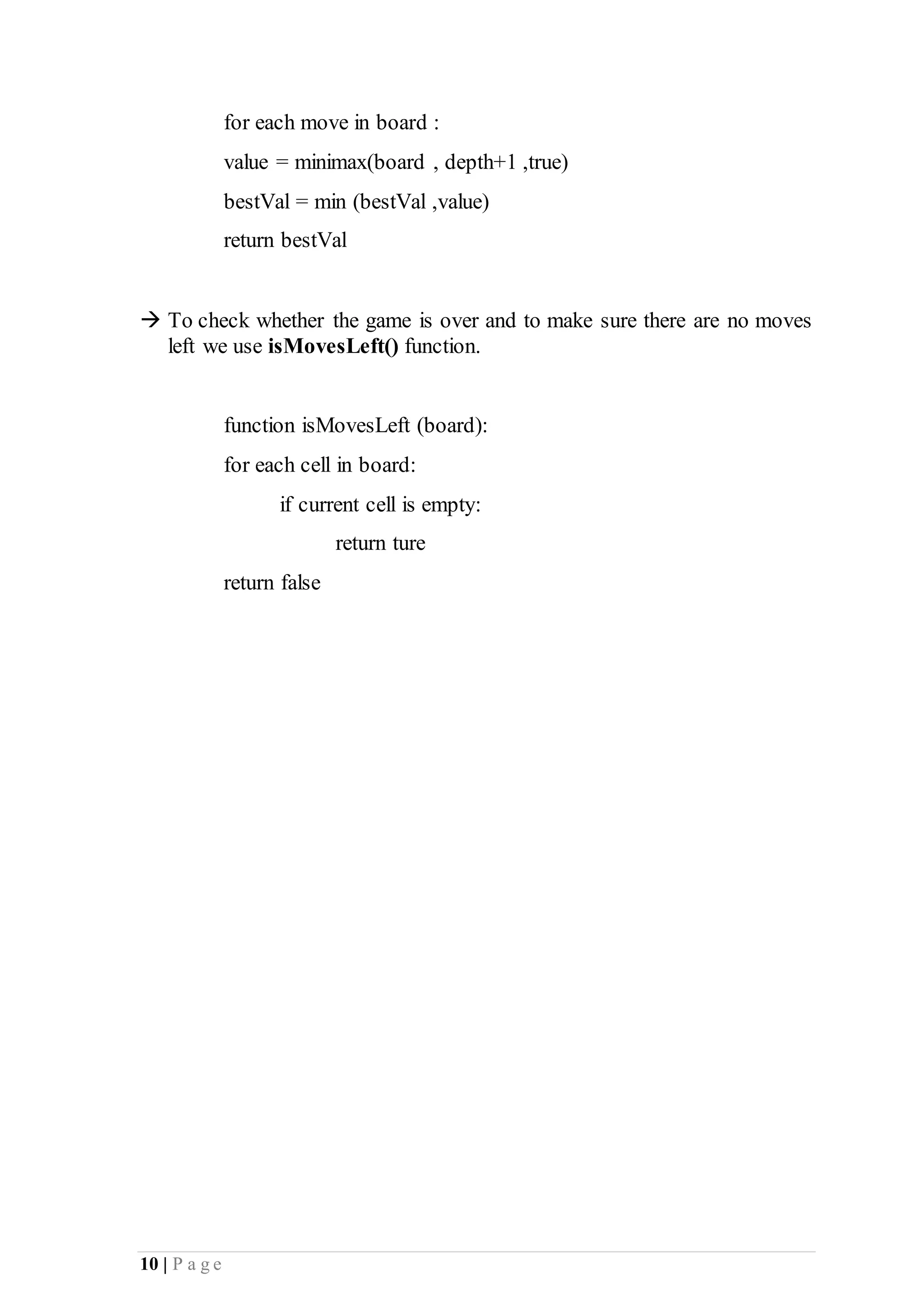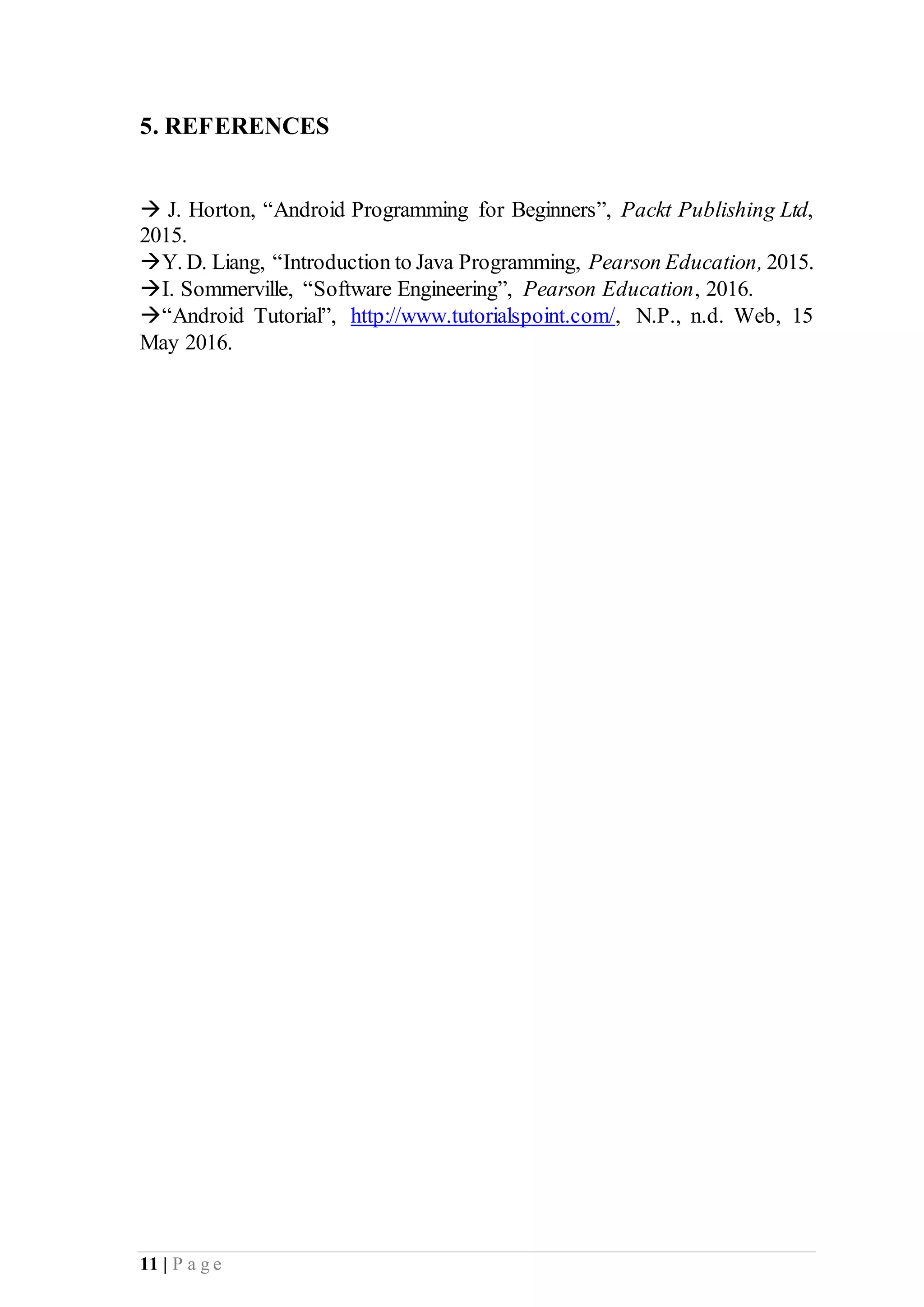This document presents a minor project proposal for developing a Tic-Tac-Toe game using the minimax algorithm. The proposal includes an introduction describing the purpose and background of the project. It then outlines the aims and objectives, which are to learn about app development and implement an AI algorithm. The methodology section includes flowcharts and use case diagrams showing how the single and multiplayer modes will work. Finally, the algorithm section describes how the minimax algorithm will be implemented to select the computer's best move.
